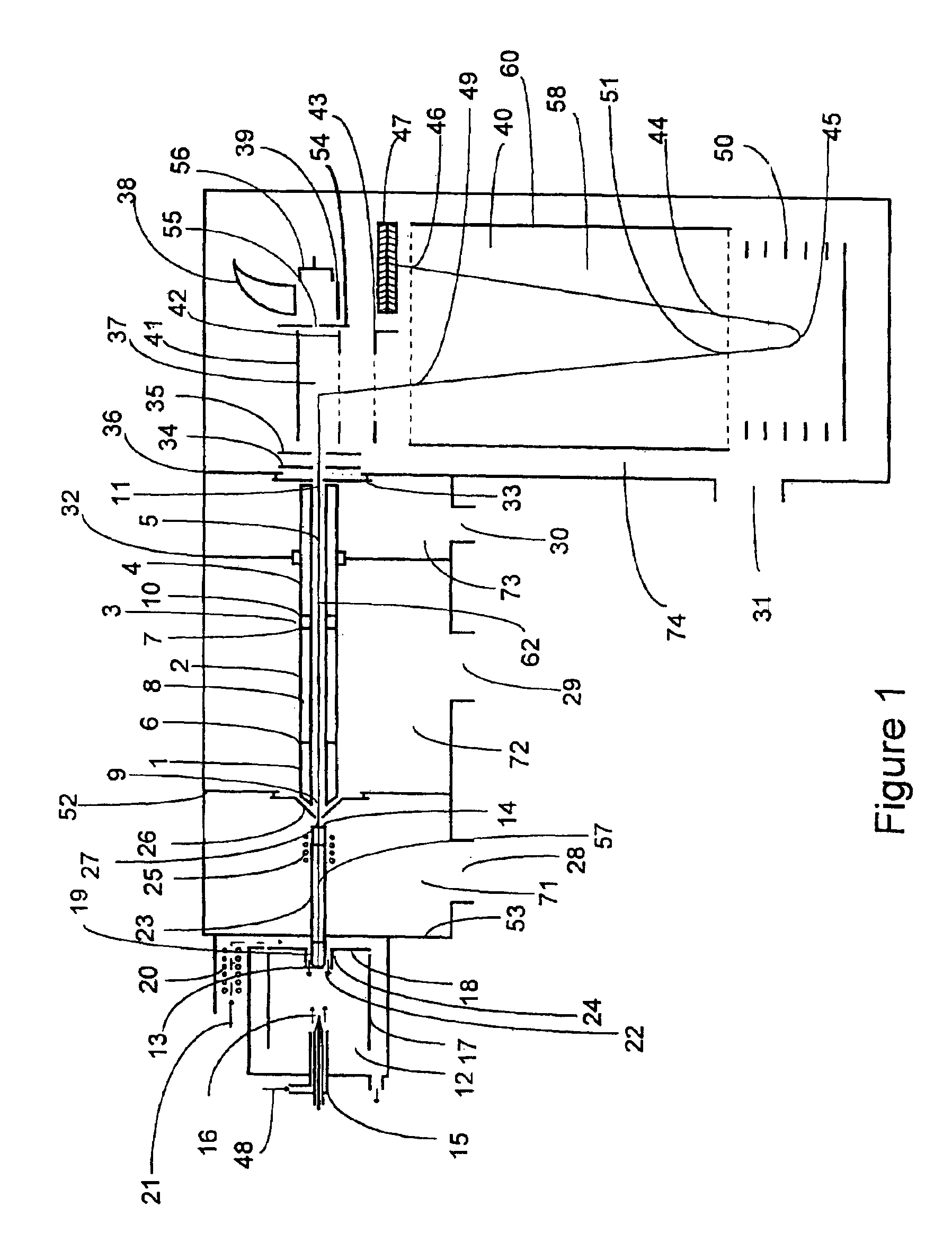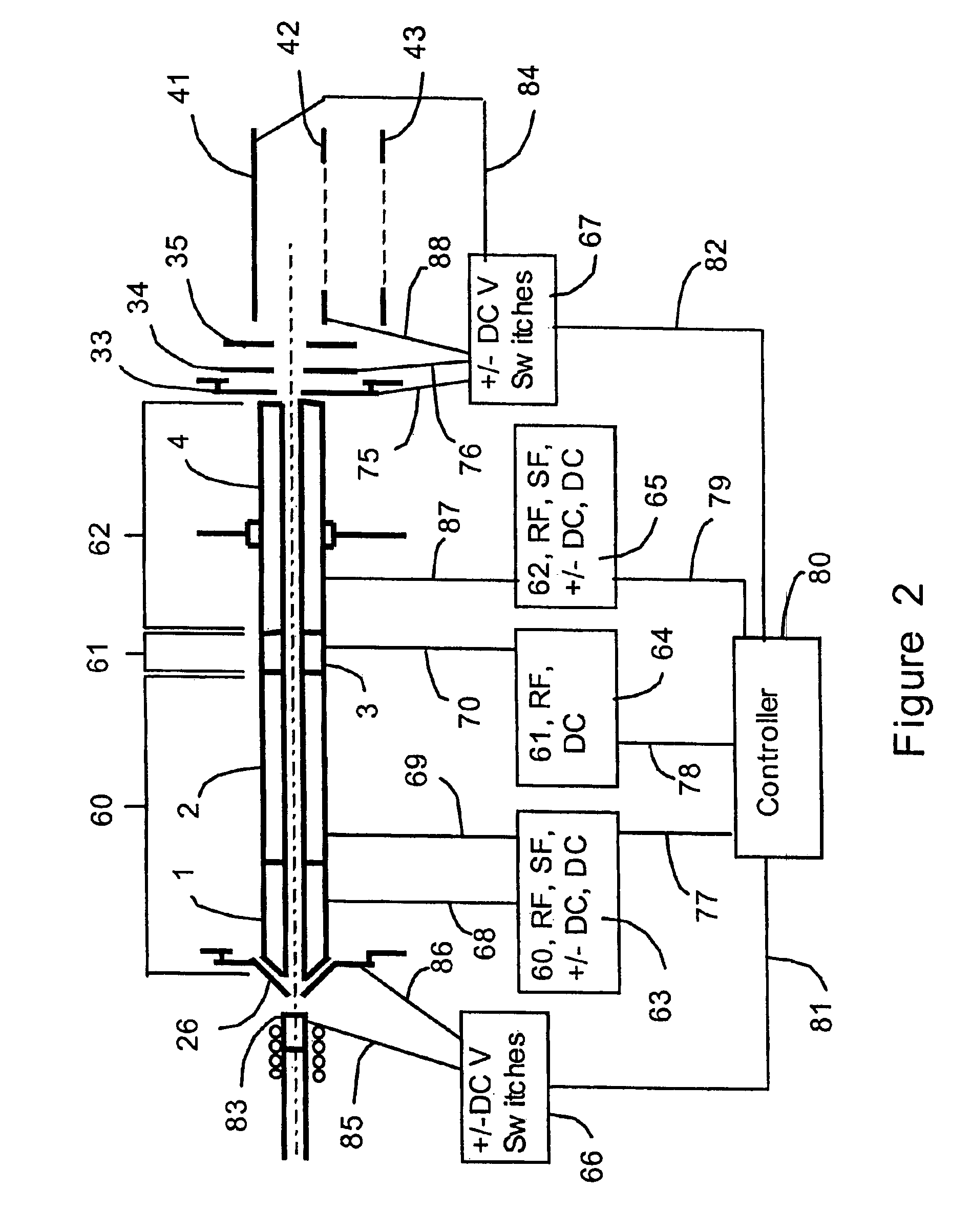Mass spectrometry with multipole ion guides
a mass spectrometry and guide technology, applied in mass spectrometers, stability-of-path spectrometers, separation processes, etc., can solve the problems of increasing the cost and complexity of an api ms/ms mass analyzer, scattering effect ion loss, and ion loss, so as to achieve high ion transmission efficiency, and efficient transport
- Summary
- Abstract
- Description
- Claims
- Application Information
AI Technical Summary
Benefits of technology
Problems solved by technology
Method used
Image
Examples
Embodiment Construction
[0046]A multipole ion guide which extends continuously from one vacuum pumping stage into at least one additional vacuum pumping stage configured in a mass analyzer apparatus has been described in U.S. Pat. No. 5,652,427. Ion trapping within a multipole ion guide coupled with release of at least a portion of the ions trapped within the multipole ion guide followed by pulsing of the released ions into the flight tube of a Time-Of-Flight mass analyzer flight tube is described in U.S. Pat. No. 5,689,111. The operation of a multipole ion guide configured in an API TOF mass analyzer to achieve MS and MS / MSn analytical capability has been described in U.S. patent application Ser. No. 08 / 694,542. The inventions described in the following sections include new embodiments of multipole ion guides, new configurations multiple ion guide assemblies and their incorporation into mass analyzers with new methods of operating said ion guides and mass analyzers. The inventions improve the performance ...
PUM
 Login to View More
Login to View More Abstract
Description
Claims
Application Information
 Login to View More
Login to View More - R&D
- Intellectual Property
- Life Sciences
- Materials
- Tech Scout
- Unparalleled Data Quality
- Higher Quality Content
- 60% Fewer Hallucinations
Browse by: Latest US Patents, China's latest patents, Technical Efficacy Thesaurus, Application Domain, Technology Topic, Popular Technical Reports.
© 2025 PatSnap. All rights reserved.Legal|Privacy policy|Modern Slavery Act Transparency Statement|Sitemap|About US| Contact US: help@patsnap.com



